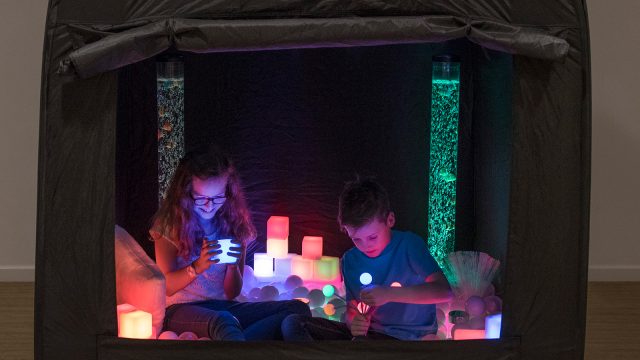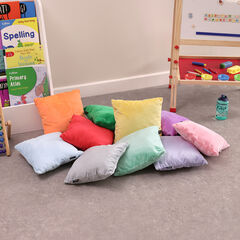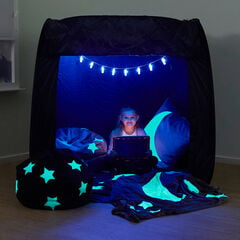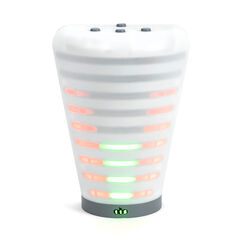-
Limit background noise
We all know a school environment can be noisy. For a child with hearing loss, trying to hear spoken words over classroom background noise can be overwhelming and exhausting. Here are some things to watch out for:
-
Be aware of noise-levels in the classroom
As well as the general chatter of pupils, other sources of classroom background noise include the following:
- People walking past the classroom door
- Adults or children in the classroom speaking at the same time
- Loud air conditioning fans
- Running water from taps
- Classroom music
- Paper rustling, chairs squeaking – anything that makes a noise!
Though these everyday classroom noises may seem insignificant to a hearing person, for someone with hearing loss, they can have a significant impact on their ability to focus on any specific sound or voice. Try to minimise these sounds by keeping the classroom door closed, being conscious of the noise level in the classroom and encouraging pupils to speak one at a time.
-
Soften open spaces
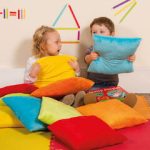
Open-plan classrooms, where several classes are in the same area, and open areas of the school such as the canteen or playground may present particular challenges for children with hearing difficulties. The acoustics in open-plan classrooms can interfere with speech perception and impact learning.
The following are some simple things that you can do to help dampen the background noise in open learning spaces:
- Add curtains or a sheer fabric over windows to reduce the impact of sound bouncing off the glass.
- Fit acoustic ceiling tiles to soak up the sound.
- Attach felt pads to the feet of chairs and desks to help reduce the noise made by pupils.
- Use carpets or other soft furnishings such as mats or cushions to help absorb sound.
It can be helpful to speak to pupils about being mindful of noise in the classroom. Teaching resources such as a sound level monitor can add some fun to this focus.
-
Enable lipreading
Children with hearing conditions often use visual cues such as lipreading techniques and gestures to aid communication and understanding of speech. The following simple techniques can help create a classroom environment conducive to lipreading:
-
Consider positioning
During carpet sessions, ensure pupils with hearing loss sit at the front with a clear view of the teacher’s face.
-
Assess lighting
Avoid sitting in front of a window as this causes a silhouette effect, meaning your face will not be visible. Ensure the classroom is well lit—Dim lighting can make it difficult to read lips and expressions.
-
Determine optimal seating positions
Most hearing aids and implants work better within close proximity of the speaker. For carpet times or whole-class input, it can be helpful for pupils to sit at the front of the classroom so they can turn around and see their classmates speaking, rather than having a view of their backs. If they have a better hearing ear, that ear should be facing the teacher.
Pupils with hearing difficulties will most likely have a preferred area of the classroom to sit, in a location that will help them hear or learn most effectively. For example, if a pupil has a hearing aid in their right ear, they may prefer to sit at a desk or table where their aid is facing most of the classroom.
It can be helpful to speak to your pupils or their parents to understand their hearing loss better and determine the best place for them to sit in the classroom to optimize their learning.
-
Provide a sanctuary for the senses
Some children with hearing loss may enjoy exploring sounds. Others may find it tiring to be in a noisy classroom environment. Pupils may take comfort in having a break from concentrating on sounds and hearing, to explore their other senses.
In creating a sensory space, all pupils have somewhere they can go to take some time out from the noise and energy of the classroom.
A few things to consider when setting up a sensory space to ensure it is ear-friendly include the following:
- If you have pupils with sound sensitivities—these sometimes go hand-in-hand with hearing loss—ensure the objects in the sensory area do not cause loud, sharp, or irritating noises. The more you understand the types of noises your pupils find uncomfortable, the better you can tailor the sensory area to their needs. You can also provide a pair of earmuffs to block out sounds.
- Soft furnishings such as carpets, cushions, fabrics, dens, and soft toys can help to keep the area quiet.
- Limit the number of children in the sensory area—too many voices in a small area can negate the intended calming effect of the environment.
-

-
